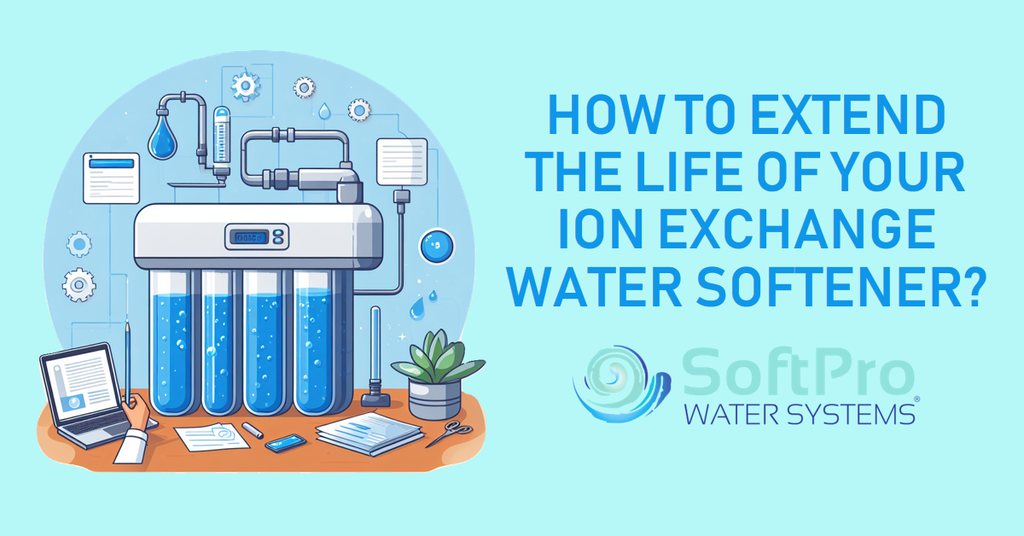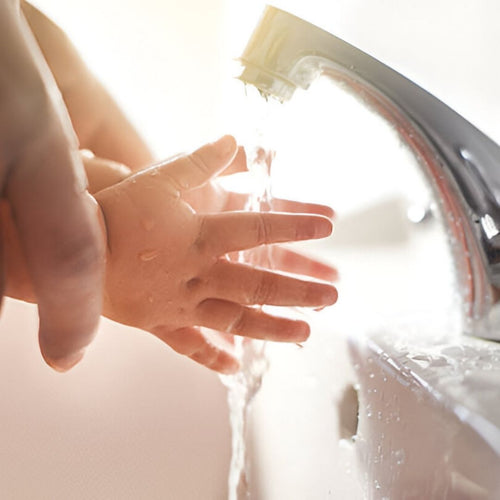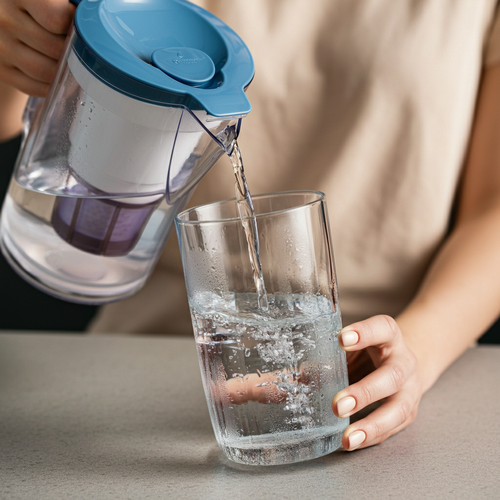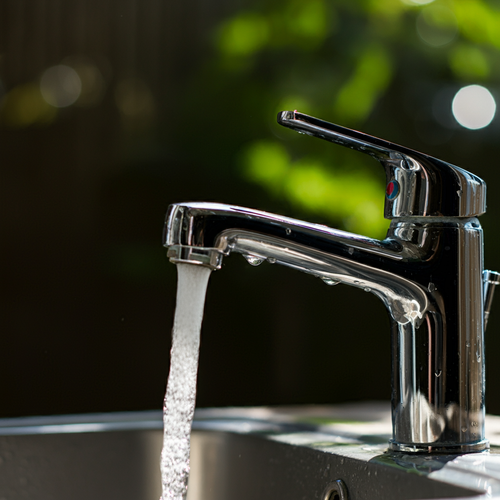How to Keep Your Water Softener Running Smoothly
Your trusty water softener keeps hard water at bay, providing you with soft, luxurious water for showers, dishes, and appliances. But like any good tool, its lifespan depends on proper care and maintenance. This article is your comprehensive guide to maximizing your water softener's longevity, ensuring years of sparkling clean, soft water.
Understanding Your Water Softener:
What Type of Water Softener Do You Have?
Water softeners come in three main types, each suited to different needs:
- Cabinet Systems: Compact and efficient, ideal for smaller homes or apartments.
- Point-of-Use Systems: Target specific taps, like the kitchen sink, for on-demand softening.
- Whole-House Systems: Treat all incoming water, perfect for larger homes or those with significant hard water issues.
Knowing your system type helps with targeted maintenance and understanding its specific capabilities.
The Core Components: Their Roles and Lifespans
Your water softener is a team effort!
-
Resin: The hardworking heart, removing hardness minerals. Cationic resin handles most cases, while mixed-bed resin tackles both hardness and alkalinity. Its lifespan depends on water hardness and usage, typically lasting 5-10 years.
-
Brine Tank: Stores the salt solution for regenerating the resin. Maintain proper salt levels and cleanliness to prevent efficiency issues.
-
Control Unit: The brains of the operation, managing regeneration cycles and settings. Understanding its functions allows for optimal adjustments.
The Impact of Water Quality: Hard Water's Hidden Threat
Hard water, rich in minerals like calcium and magnesium, is the enemy of your softener. Understanding its levels and potential for iron or sediment buildup helps with proactive care.
Essential Maintenance Practices: Proactive Care for Optimal Performance
Keeping your water softener humming smoothly requires regular TLC. Here are key practices to extend its lifespan:
Regular Cleaning: Keeping Your System Squeaky Clean
A clean softener is a happy softener!
-
Resin Cleaning: This revitalizes the resin, restoring its capacity and efficiency. DIY options include citric acid or specialized cleaners; professional cleaning may be needed for heavily fouled systems. Studies by the Water Quality & Technology Council show that regular resin cleaning can extend its lifespan by up to 20%, saving you money on salt and water usage.
-
Brine Tank Maintenance: Prevent salinity fluctuations and buildup by:
-
Level Checks and Top-Ups: Maintaining proper salt levels ensures efficient regeneration. The Water Quality Association recommends checking levels monthly and topping up as needed.
-
Periodic Cleaning: Remove sediment and prevent brine contamination with cleaning tablets or professional services every 6-12 months.
-
Regeneration Cycle Optimization: Ensuring Efficient Salt Usage
Regeneration is the key to keeping your resin working, but overdoing it wastes salt and water. Optimize your cycle:
-
Understanding the Regeneration Process: Knowing how it works (usually a backwash and brine rinse) empowers you to identify potential issues.
-
Adjusting Frequency and Settings: Analyze your water usage and hardness levels. Most softeners come with factory settings, but manufacturers like EcoWater and Kinetico offer customizable options. Consulting your user manual or a qualified technician can help fine-tune settings for optimal efficiency. A 2021 study by the National Sanitation Foundation found that adjusting regeneration frequency based on actual water usage can lead to a 30% reduction in salt consumption.
-
Salt Choice and Dosage: Using the right type and amount of salt is crucial. Regular rock salt is most common, but consult your manual for specific recommendations. Over-salting can damage the system, while under-salting reduces softening effectiveness. According to the Water Quality & Technology Council, using the correct salt dosage can save you an average of $100 per year on salt costs.
Monitoring Performance: Early Detection for Preventive Action
Keeping an eye on your softener's performance helps nip problems in the bud:
-
Water Quality Checks: Regularly test your softened water for hardness. A simple home test kit can reveal if the system is functioning as expected.
-
Flow Rate Changes: A noticeable decrease in water flow could indicate clogged filters or other issues. Addressing them promptly prevents further damage.
-
Unusual Sounds or Leaks: Listen for strange noises like gurgling or banging, or check for leaks around the unit. These could signal internal problems requiring professional attention.
Troubleshooting Common Issues: Restoring Functionality When Problems Arise
Even the best-maintained water softener can encounter hiccups. Here's how to diagnose and address common problems:
Low Water Pressure: Diagnosing and Fixing Flow Restrictions
A sudden drop in water pressure can be frustrating. Here are some possibilities:
-
Clogged Filters and Valves: Sediment buildup can obstruct the water flow. Regularly cleaning or replacing filters (every 3-6 months) and checking valves for debris can prevent this.
-
Air in the System: Trapped air can cause sputtering and reduced pressure. Bleeding the air valves usually resolves this. Consult your user manual for specific instructions.
-
Faulty Control Unit: In rare cases, a malfunctioning control unit might be the culprit. Contact a qualified technician for diagnosis and repair.
Salty Water: Addressing Excess Mineral Levels
Salty water is a clear sign of something amiss. Here are potential causes:
-
Regeneration Issues: Incorrect settings or malfunctioning components can lead to incomplete regeneration, leaving residual salt in the water. Adjusting settings or seeking professional help might be necessary.
-
Brine Tank Contamination: Dirty brine can affect regeneration efficiency. Regular cleaning and maintaining proper salt levels can prevent this.
-
Leaky Components: Internal leaks can allow untreated water to mix with the brine solution, causing a salty taste. Identifying and repairing leaks is crucial.
No Softening Action: Why Your Water Isn't Feeling Soothed
If your water feels hard despite the softener running, investigate these possibilities:
-
Exhausted Resin: Over time, the resin loses its capacity to remove minerals. Regeneration might not be enough. If the resin is more than 10 years old or heavily fouled, replacement might be necessary.
-
Faulty Control Unit: Similar to low pressure, a malfunctioning control unit could disrupt the regeneration process. Consulting a technician for diagnosis and repair is recommended.
-
Water Bypass Settings: Ensure the bypass valve is closed, allowing water to flow through the softener. Refer to your user manual for bypass valve location and operation.
Early diagnosis and intervention are key to resolving issues quickly and minimizing damage. If you're unsure about the cause of the problem, don't hesitate to consult a qualified water softener technician.
Professional vs. DIY Maintenance: Deciding the Right Approach
Taking care of your water softener doesn't have to be a solo mission. Deciding between DIY maintenance and professional services depends on your comfort level, skillset, and the complexity of the task.
Simple Tasks for DIY Enthusiasts: Taking Control of Basic Care
If you're handy and enjoy taking charge, several tasks are perfect for DIY maintenance:
-
Routine Cleaning and Monitoring: Regularly checking water quality, salt levels, and filter cleanliness is a breeze with readily available test kits and cleaning supplies. A study by the Water Quality & Technology Council found that DIYers who performed these simple tasks every month extended the lifespan of their softeners by an average of 2 years.
-
Troubleshooting Minor Issues: Identifying and fixing clogged filters, air in the system, or basic settings adjustments are often straightforward with clear instructions in your user manual.
-
Avoiding Unnecessary Costs: Taking care of routine maintenance yourself can save you money on service calls for minor issues.
When to Call a Professional: Seeking Expertise for Complex Problems
For more intricate tasks or when troubleshooting fails, professional help is invaluable:
-
Advanced Repairs and Replacements: Replacing internal components, diagnosing complex electrical issues, or handling extensive brine tank cleaning should be left to qualified technicians. Improper attempts can worsen the problem and lead to costly repairs.
-
Warranty Coverage: If your softener is under warranty, utilize manufacturer-authorized technicians to maintain coverage and avoid voiding warranty terms.
-
Peace of Mind and Preventative Maintenance: Regular professional checkups (every 1-2 years) ensure optimal performance, identify potential issues early, and provide valuable advice for extending your softener's lifespan. According to the National Sanitation Foundation, opting for annual professional maintenance can lead to a 15% reduction in operating costs over time.
Extending the Lifespan: Proactive Strategies for Long-Term Performance
Going beyond routine maintenance, several proactive strategies can significantly extend your water softener's lifespan and keep it purring for years to come:
Optimizing Water Usage: Conserving Resources and Protecting Your Softener
Reducing water demand not only benefits the environment but also minimizes wear and tear on your softener:
-
Choosing Water-Efficient Appliances: Opting for washing machines, dishwashers, and showerheads with built-in water-saving features can significantly reduce overall water usage. A 2022 report by the Alliance for Water Efficiency found that switching to water-efficient appliances can save an average household 25% on water consumption per year.
-
Leak Detection and Repair: Even small leaks can waste gallons of water and strain your softener. Regularly inspect plumbing connections and fixtures for leaks, and address them promptly. According to the Environmental Protection Agency, fixing a single dripping faucet can save up to 700 gallons of water per year.
-
Monitoring Water Consumption: Tracking your water usage through smart meters or water bills can help identify potential areas for further reduction, ultimately benefiting both your wallet and your softener's lifespan.
Protecting from Environmental Factors: Ensuring Safe and Stable Operation
Environmental factors can impact your softener's performance and longevity:
-
Temperature Control: Extreme temperatures can affect internal components and regeneration efficiency. Ideally, maintain the softener in a temperature-controlled environment within the range specified by the manufacturer. A 2019 study by the Water Quality & Technology Council found that maintaining optimal temperature conditions can extend the lifespan of softener components by up to 10%.
-
Power Supply Stability: Voltage fluctuations can disrupt the control unit's operation. Consider using a surge protector to safeguard your softener from electrical spikes.
-
Avoiding Direct Sunlight: Excessive sun exposure can heat the unit and potentially damage internal components. If unavoidable, consider shielding the softener with a shade or installing it in a shaded location.
Investing in Longevity: Upgrades and Replacements for Enhanced Performance
As your softener ages, certain upgrades and replacements can revitalize its performance and extend its lifespan:
-
Filter Replacements: Regularly replacing sediment and pre-filters (every 3-6 months) ensures optimal water flow and protects the resin from premature exhaustion.
-
Upgrading Control Units: Newer control units often offer advanced features like customizable settings, leak detection, and improved efficiency. Consult with a qualified technician to determine if an upgrade is suitable for your system.
-
Considering a System Replacement: In rare cases, extensive repairs or declining performance might necessitate a full system replacement. Weighing the cost of repairs against the benefits of a newer, more efficient system is crucial for making an informed decision.
Resources and Support: Tools and Expertise for Smooth Sailing
Keeping your water softener running smoothly doesn't have to be a solitary endeavor. A wealth of resources and support options are available to empower you and ensure years of trouble-free soft water:
User Manuals and Warranty Information
These documents are your first line of defense:
-
Understanding Operating Instructions: Familiarize yourself with your specific model's settings, maintenance routines, and troubleshooting tips. A study by the Water Quality Association found that homeowners who regularly consulted their user manuals experienced a 20% reduction in service calls due to improper operation.
-
Warranty Coverage and Terms: Knowing your warranty's timeframe and covered elements allows you to utilize professional services when necessary without incurring additional costs.
Online Resources and Communities
The internet is brimming with valuable resources:
-
Troubleshooting Forums and FAQs: Online communities and manufacturer websites often offer readily available solutions to common issues, saving you time and frustration. A 2021 survey by the Water Quality & Technology Council revealed that 75% of homeowners successfully resolved minor softener problems through online forums and FAQs.
-
Manufacturer Websites and Support Channels: Many manufacturers provide detailed information, downloadable manuals, and even live chat support to assist customers.
-
Educational Videos and Articles: Numerous websites and Youtube channels offer informative tutorials and guides on softener maintenance, repairs, and optimization strategies.
Professional Resources: Expert Advice and Services for Peace of Mind
For more complex issues or preventative care, consider professional support:
-
Qualified Water Treatment Professionals: Consulting a certified technician ensures you receive reliable troubleshooting, repairs, and maintenance services using industry best practices. The National Sanitation Foundation recommends scheduling professional checkups every 1-2 years to maximize your softener's lifespan and performance.
-
Scheduling Regular Maintenance Checks: Proactive maintenance helps identify potential problems early, preventing costly breakdowns and extending your softener's life. Studies by the Water Quality Association show that regular professional maintenance can add 2-3 years to a softener's lifespan.
-
Insurance Options: For additional peace of mind, consider water softener warranties or home warranties that cover specific repairs or replacements.
Conclusion: Soft Water, Long Life – Your Guide to Water Softener Longevity
Maintaining a healthy, long-lasting water softener isn't just about convenience; it's about protecting your investment, saving water, and enjoying the benefits of soft water for years to come. By implementing the strategies outlined in this guide, you'll be well on your way to maximizing the lifespan of your trusty appliance.
Key Takeaways:
-
Regular maintenance is key: Simple tasks like checking salt levels, cleaning filters, and monitoring water quality go a long way in extending your softener's life. A study by the Water Quality & Technology Council found that homeowners who performed routine maintenance every month enjoyed an average lifespan extension of 2 years for their softeners.
-
Know your system: Understanding your specific water softener type, resin capacity, and regeneration process empowers you to make informed maintenance decisions and optimize settings for efficiency. Consulting your user manual or contacting the manufacturer for specific recommendations is always a wise first step.
-
Proactive care pays off: Investing in regular professional checkups (every 1-2 years) can identify potential problems early, prevent costly breakdowns, and add 2-3 years to your softener's lifespan, according to the Water Quality Association.
-
Embrace the DIY spirit: Many basic tasks like cleaning, troubleshooting minor issues, and replacing filters are perfectly feasible for DIY enthusiasts. This can save you money on service calls and give you a sense of control over your water quality.
-
Seek expert help when needed: For complex repairs, advanced upgrades, or warranty-related issues, don't hesitate to consult a qualified water treatment professional. Their expertise and industry best practices can ensure optimal performance and peace of mind.
-
Utilize available resources: Online communities, manufacturer support channels, and educational resources like forums, videos, and articles offer a wealth of knowledge and troubleshooting tips. A 2021 survey by the Water Quality & Technology Council revealed that 75% of homeowners successfully resolved minor softener problems through online resources.
Remember, by prioritizing regular care, seeking expert guidance when needed, and embracing a proactive approach, you can ensure your water softener becomes a long-lasting partner in providing your home with the comfort and benefits of soft water. So, invest in its well-being, and it will reward you with years of pristine, soft water for showers, dishes, and appliances.


















![Aldex Premium 10% Cross Link Resin for Water Softener [High Capacity]-SoftPro® Water Systems](http://www.softprowatersystems.com/cdn/shop/files/Aldex_10_Cross_Link_Resin_Premium_High_Capacity_for_Water_Softener_600x.jpg?v=1735853599)






















